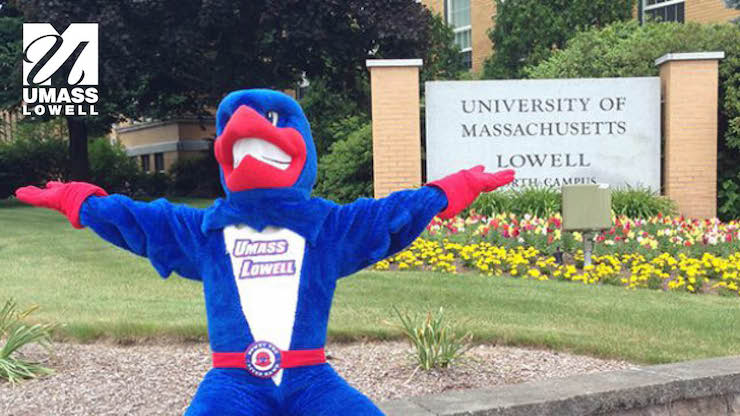University of Massachusetts Used Drones to Scan The Campus for Potential Energy Leaks

The world needs massive amounts of energy to function day to day. We use different energy sources to heat our homes, travel, communicate, and so much more. The University of Massachusetts Lowell Energy and Engineering Program has become forerunners in developing new energy solutions to meet the growing demands of an energy dependent planet. The department has been working on methods to enhance solar technology, wind turbines, renewable fuels, and making nuclear power safer and greener. Mechanical Engineering Professor Christopher Niezrecki, Director of the Center for Wind Energy and Co-Director of the Structural Dynamics & Acoustic Systems Laboratory (SDASL) and the Rist Institute for Sustainability and Energy (RISE), said in a departmental video, “At UMass Lowell’s Energy Engineering Program you can help solve the planet’s energy problems by developing new innovative technologies that will change the world.”
Not only do students in the department research ways to develop new energy sources, but they also look for ways to diminish energy losses. In a joint program between SDASL, RISE, and the university’s Facilities Management Department (FMD), students have initiated a new energy audit of the campus using drones. FMD is responsible for maintaining all of the building structures that cover the 142 acre campus. One of the department’s main focuses is to find ways to maintain these structures that promote energy sustainability. Over the last few years, FMD has hired a third party company to conduct energy audits by flying a plane over the campus to collect infrared images of energy loss sites. However, this puts a huge financial burden on the university while not fully embracing green energy practices.
Dan Abrahamson, UMass Lowell’s energy manager, is overseeing a partnership with the National Grid to reduce campus wide energy consumption. National Grid donated $500,000 to help UMass Lowell lower its utility bills amongst other green energy initiatives. Abrahamson became aware that students from the Francis College of Engineering had been using drones to examine bridges, roads, and buildings for structural integrity. Curious if these drones could be used to see if heat was escaping from buildings and underground pipes, Abrahamson contacted Professor Niezrecki. With his colleague, Assistant Professor Alessandro Sabato, Professor Niezrecki has been researching advanced sensing technologies available with drones to monitor energy systems.
Recently Professor Sabato and his students in the SDASL had entered a project with the Massachusetts Department of Transportation (MassDOT) to scan for any voids beneath roadways that could result in sinkholes. For this project, Professor Sabato purchased a new drone for the SDASL that is equipped with a $13,000 infrared camera. The drone’s camera can digitally scan and create maps of what is hidden below ground or behind building walls. For the MassDOT project, the drone scanned the streets and any voids below registered as a different color through the infrared camera because the air temperature in these pockets differentiated from the surrounding area.
A team from FMD, SDASL, and RISE came together to use Professor Sabato’s new drone over the North and South campus clusters. The buildings on these clusters have a central steam plant that provides heat through an underground system. The East campus buildings each have their own boilers or furnaces that are maintained manually, as of yet. For the drone’s infrared camera to work properly, the mission would have to be done at night when there would be no sunlight interference. Therefore, the team ran a preflight calibration test the day before. As the only member on the team to have a Part 107 license from the FAA, Ph.D. student Nitin Kulkarni piloted the drone.
While the drone autonomously flew through a preprogrammed flight plan, Nitin had to initiate the flight and be ready to remotely intercept control at any time. The daytime flight lasted about 45 minutes. The drone covered a grid pattern over the North and South campus at an altitude of 250ft. The grid encompassed every square inch of the land and buildings below. Once the trial was done and the sun had set, the team returned to the roof of Southwick Hall for the final flight. Another 45 minutes later and the drone had completed scanning the grid. It was time to upload all the images to the lab for processing. Before landing the drone, to commemorate the experiment, the team lay down on their backs in a circle atop the roof to allow the drone’s camera to capture their thermal signature. In the resulting image, you can see a red star on the roof, the thermal outline of the team.
Once back at the lab, the images showed a bright red spot on the ground in front of the Olney Science Center and between Pinanski Hall and the Costello Athletic Center. These bright red spots indicate that the below ground steam pipes could be leaking. Abrahamson was so pleased with the results of the drone project that he hopes to continue using the drone to examine if equipment like generators or boilers are overheating. “This could lead to some pretty great energy projects to tighten up our buildings,” he said. Professor Niezrecki plans to use the drone to create 3D photogrammetry maps of the campus buildings. With these maps, a more detailed energy reduction plan can be generated. “It could potentially be a game-changer in terms of doing energy audits on a large, rapid scale,” said Professor Niezrecki. “We’re looking to push the envelope of the technology beyond simple scans.” With the amount of energy it takes to run a campus like UMass Lowell, every bit saved can make a tremendous contribution towards sustainability. UMass Lowell is proving that energy efficient drones are ideal tools for conducting energy audits.
|